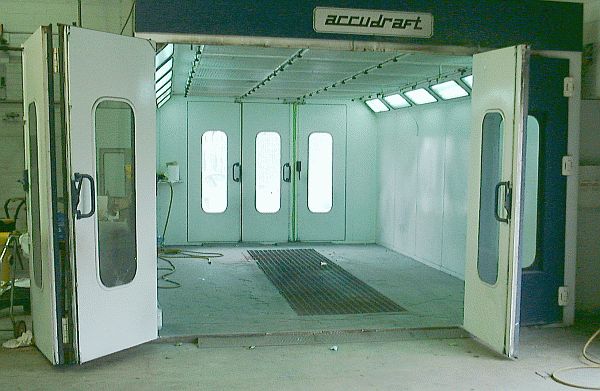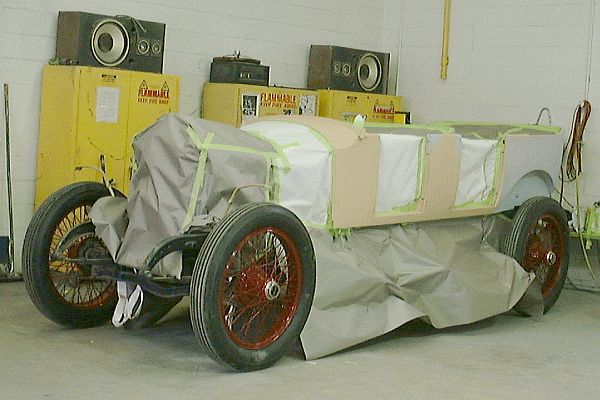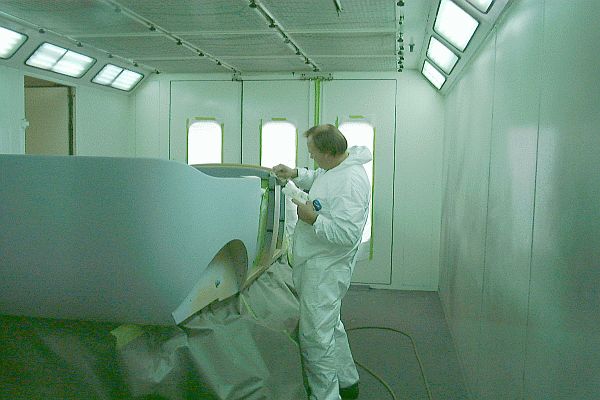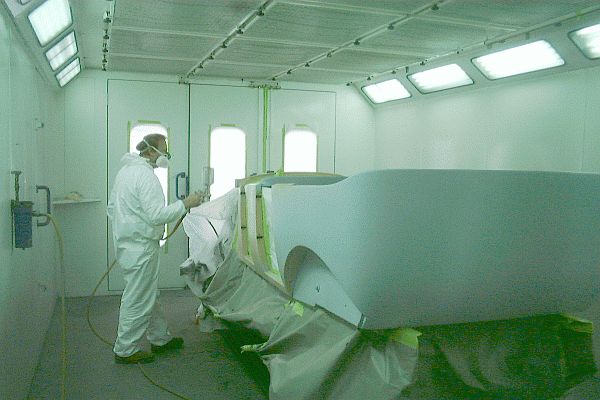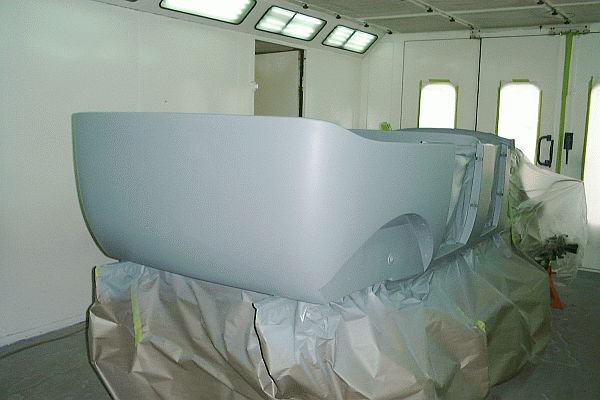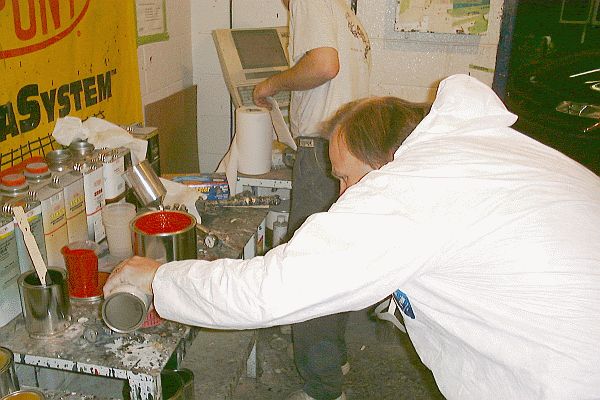|
Applying the top color coat of paint to the car would be done in an paint booth. A paint booth provides a highly controlled environment for applying the top color coat. Of prime importance is maintaining the air's proper temperature and humidity level during spraying. Only with temperature and humidity within a narrow range and maintained constant during the paint's application can a lasting finish be achieved. The paint booth is also equipped with a uniform pattern of lighting that insures all surface areas of the car are properly illuminated with a uniform intensity of light. Proper illumination is necessary to insure a uniform layer of paint is applied. The booth is designed to control airflow through a uniform movement of air. After being filtered and then temperature and humidity adjusted the air enters the booth from the ceiling (the final micron-particle filters are seen in the ceiling where the air enters). The air is removed from the booth at the floor through grates and discharged to the exterior of the building. This airflow pattern pulls all overspray from the paint gun down and away from the sides of the car and out of the booth. Finally, the booth provides a means to bake the freshly applied paint. By baking the paint the drying and curing time is greatly reduced and the crosslinking properties of the paint's chemistry which give Imron it's industrial-strength qualities are activated.
With the car just outside the paint booth, every area of the car that is not to be painted is covered with paper. Large sheets of heavy weight paper and many rolls of masking tape are used to seal every opening. Once in the booth the car is set on jackstands, the wheels are removed, and the axles and wheel drums wrapped with paper and tape. Due to the high volume of airflow through the booth it is important that all paper be well taped and secure. The long sheet of paper at the side of the car between the front left and rear left wheels will be folded under the car once it is in the paint booth and mated with the piece from the opposite side to seal off the underside of the body from being exposed to overspray.
With the car sealed in paper and the booth controls set to control the temperature and humidly in the chamber, all surfaces to be painted are cleaned one last time. Every surface to receive paint is dusted with a high-velocity blast of air from an air chuck. Next, every surface is wiped with cleaner to insure no fingerprint oils or other materials remain on the primed surfaces. During this step the surface temperature of the car has time to equilibrate to that of the air passing through the chamber.
With the body clean and prepared the surface is coated with DuPont's ChromaPremier System Sealer #4940. This sealer uses a isocyanate-activated basecoat binder system that delivers optimal basecoat appearance.
After application of the sealer coat the car sits in the paint booth to allow the sealer to become dry enough for application of the color coats which will be applied shortly. While the primers and fillers that had been applied to the body were dull in color shine, the sealer starts to take on a semi-gloss reflectivity. As the sealer cured the smoothness and shine of the final surface coats begins to show.
While the car sits in the paint booth allowing time for the sealer to cure, the Imron topcoat paint is prepared. The basic red color for the car was custom blended to the DuPont Imron RS-910 color specification. Several gallons were prepared so that additional color would not need to be blended which might risk subtle variations in shade. Pictured above, the red color is mixed in proper proportion with Imron Activator. |
